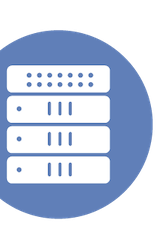|
|

This video is part of the appearance, “Brocade Virtual Symposium 2012“. It was recorded as part of Brocade Virtual Symposium 2012 at 13:00-15:00 on May 2, 2012.
Watch on YouTube
Watch on Vimeo
Part 1 of the Virtual Symposium focuses on Ethernet fabrics:
- Historical Ethernet LAN design: The 3-layer Hierarchy with Spanning Tree
- The demand for fabric technology, from Ethernet to Fibre Channel
- Core-Edge Ethernet Fabric Architecture
- The design of Ethernet and Fibre Channel switches
- Brocade’s VCS technology: Auto-healing and improved utilization
- Virtual machine-aware network automation (port profiles and vCenter)
- The Brocade VDX product family
Join Chip Copper of Brocade and the following Tech Field Day delegates as they discuss this question.
The Tech Field Day discussion, recorded on May 2, 2012, delves into the concept of Ethernet fabrics, exploring their historical context, current applications, and future potential. The session, led by Stephen Foskett and featuring experts like Brandon Carroll, Chip Copper, Greg Ferro, Ethan Banks, and Ivan Pepelnjak, begins with an overview of traditional Ethernet LAN design, which has long relied on a three-layer hierarchy with Spanning Tree Protocol (STP). This design, rooted in constraints from the 1970s, has persisted despite its limitations, such as the need to avoid network loops and the inefficiencies of STP. The discussion highlights how these legacy designs have shaped current networking practices, often leading to rigid and suboptimal network architectures.
Chip Copper from Brocade introduces the concept of Ethernet fabrics as a more flexible and efficient alternative to traditional hierarchical designs. He explains that Ethernet fabrics have been around for about 15 years, offering a more dynamic and resilient network structure. Unlike the old model, which places cheap, less capable devices at the edge and more expensive, powerful devices at the core, Ethernet fabrics allow for a more distributed and intelligent network. This approach eliminates the need for Spanning Tree Protocol by enabling direct communication between nodes, thus avoiding the artificial constraints imposed by traditional designs. Copper emphasizes that this shift is not just about improving performance but also about simplifying network management and reducing the need for extensive manual configurations.
The presentation also touches on the practical applications of Ethernet fabrics in modern data centers, particularly in the context of virtual machine (VM) management. Copper discusses Brocade’s VCS technology, which supports features like auto-healing and improved utilization, making the network more resilient and efficient. He highlights the importance of network automation, particularly in environments with high VM mobility, where traditional network configurations can become a bottleneck. By integrating with tools like VMware’s vCenter, Brocade’s solutions can automatically adjust network settings based on VM movements, ensuring consistent performance and security without manual intervention. This capability not only enhances operational efficiency but also aligns network behavior more closely with business needs, ultimately supporting more agile and responsive IT environments.
Personnel: Brandon Carroll, Chip Copper, Ethan Banks, Greg Ferro, Ivan Pepelnjak, Stephen Foskett









